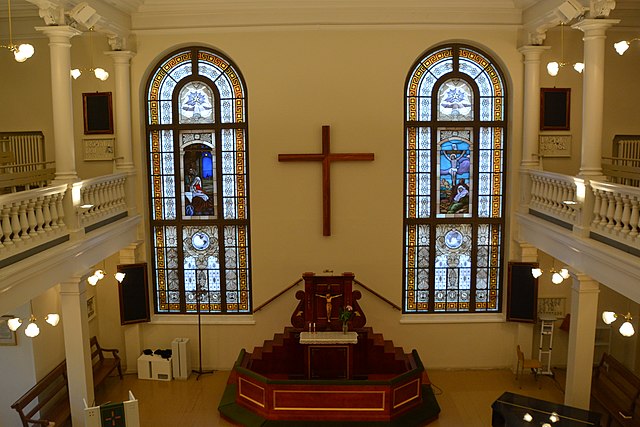A missionary is a member of a religious group who is sent into an area in order to promote its faith or provide services to people, such as education, literacy, social justice, health care, and economic development.
Catholic missionaries in Papua New Guinea
Central Asian Buddhist monk teaching a Chinese monk. Bezeklik, 9th-10th century; although Albert von Le Coq (1913) assumed the blue-eyed, red-haired monk was a Tocharian, modern scholarship has identified similar Caucasian figures of the same cave temple (No. 9) as ethnic Sogdians, an Eastern Iranian people who inhabited Turfan as an ethnic minority community during the phases of Tang Chinese (7th-8th century) and Uyghur rule (9th-13th century).
Temple of One Thousand Buddhas, in La Boulaye, Saône-et-Loire, Burgundy
Lähetyskirkko, a Christian mission church in Ullanlinna, Helsinki, Finland
Literacy is the ability to read and write. Broadly, literacy may be viewed as "particular ways of thinking about and doing reading and writing" with the purpose of understanding or expressing thoughts or ideas in written form in some specific context of use. In other words, humans in literate societies have sets of practices for producing and consuming writing, and they also have beliefs about these practices. Reading, in this view, is always reading something for some purpose; writing is always writing something for someone for some purpose. Beliefs about reading and writing and their value for society and for the individual always influence the ways literacy is taught, learned, and practiced.
Bill of sale of a male slave and a building in Shuruppak, Sumerian tablet, c. 2600 BCE
Brain areas involved in literacy acquisition
Sample milestone sketch
Reviewing photos after a photowalk








